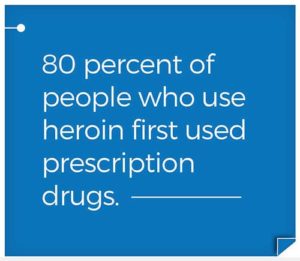- Jun 3
- AddictionDrug Addiction TreatmentPreventionTreatment
Opioid drug abuse is one of the biggest public health issues facing the country today. The harmful effects of opiates can have devastating consequences on every aspect of an individual’s life. Opioid abuse can result in legal troubles, family problems, financial hardships, long-lasting health problems and loss of life.
What Are Opioids?
Prescription opiates, as well as illegal opioids like heroin, work by attaching to the brain’s receptors and triggering a flood of endorphins. These artificial endorphins help to block pain and create a euphoric effect. Although the short-term effects of opioids can be helpful to relieve pain, the side effects of opioid abuse can result in addiction or even death.
There are three types of opioids that are commonly misused:
- Prescription opioids are a type of medicine, usually pills, that are prescribed for pain relief. They include OxyContin, Percocet®, Vicodin, and Demerol. About 21 to 29 percent of people who take prescription opioids for pain misuse them.
- Heroin is an illegal analgesic drug derived from morphine, often sold as a white or brownish powder. It can be injected, snorted or smoked.
- Fentanyl is a synthetic opioid that is 50 to 100 times more potent than morphine. When prescribed legally, it is usually administered via injection, as a skin patch or in lozenge form. “Street” fentanyl is sold as powder or tablets or can be mixed with heroin. The potency of this combination is highly dangerous.
Opioid Drug Abuse Symptoms

- Confusion and poor coordination
- Droopy or watery eyes
- Slurred speech
- Slow gait
- Constant flu-like symptoms
- Dry or itchy skin
- Constricted pupils
- Drowsiness and sleeping more than usual
- Nausea and vomiting
Psychological and behavioral symptoms can be harder to recognize, but can include:
- Mood swings
- Agitation and irritability
- Poor decision-making
- No motivation and abandoning of responsibilities
- Euphoria (highs) or depression (lows)
- Anxiety and panic attacks
- Lying and deceptive behavior
- Withdrawal from family and friends
Heroin Abuse Symptoms
Even individuals who start out using prescription opiates are at risk for heroin misuse. About four to six percent of people who misuse prescription opiates transition to using heroin, and 80 percent of people who use heroin first used prescription drugs. Heroin is cheaper and easier to obtain than prescription opioids, leading many individuals to begin using out of desperation to fulfill their need. Heroin mixed with fentanyl can be particularly dangerous—because of its potency, users have a high risk of overdose.
Signs and symptoms of heroin abuse are very similar to opioid misuse but can also include:
- Needle track marks on the body
- Itching
- Infection at the needle injection site
- Shallow breathing
- Anxiety
- Tremors
- Droopy, heavy limbs
Addiction Treatment Programs for Opioid Drug Abuse
Although opioid drug abuse is on the rise, there is hope. Gateway addiction treatment centers can help.
Opioid withdrawal can be extremely difficult and dangerous without proper medical care. Therefore, it’s crucial to seek professional help to manage the withdrawal symptoms and begin the recovery process. Gateway offers a variety of substance abuse treatment programs, including:
Getting help is the first step to living a successful and drug-free life. For questions on how to begin overcoming opioid abuse, call Gateway today at 877.505.4673.


